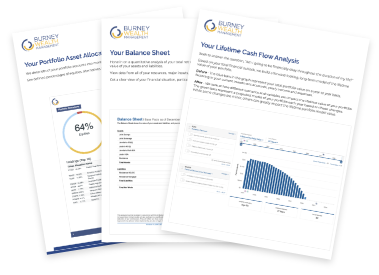What Happened in the Stock Market Yesterday? (8.5.24)

What happened in the stock market - August 5, 2024
A year notable for its lack of volatility and strong stock market returns was turned upside down the past few days as volatility spiked and stock prices fell globally. Investors got a preview that it would be a tough to start to the week when Japan’s Nikkei Stock Average fell 12.4% on Monday, its worst day since 1987.
In the US, selling pressure was widespread as all major indexes saw month-to-date losses through August fifth. The large cap S&P 500 was down 6.1% while the small cap Russell 2000 was down 9.7%. The Nasdaq was down 7.6% and entered correction territory from all-time highs set in July.
The market’s fear gauge, known as the VIX, spiked over 65, the third highest reading ever behind the Great Financial Crisis and COVID crash, before settling into an elevated but less alarming number of 37.
Why did the market sell off?
Bad stock market news started on Friday when the monthly jobs report saw weaker than expected jobs gains and the unemployment rate rose to 4.3%, its highest level since October 2021. While this data all but assured the Fed would cut rates in September, the narrative around the Fed quickly shifted to concern they were behind the curve.
This bit of news by itself, however, likely wasn’t enough to spark the magnitude of the selloff. There are other significant considerations in play for the market downturn, such as the unwinding of the Japanese “carry trade” due to the surging value of the yen. A carry trade is an investment strategy where an investor borrows money in a currency with a low interest rate and then converts it into a different currency or asset with a higher interest rate to earn the difference. For example, an investor might borrow in Japanese yen at a low interest rate and invest in U.S. bonds that offer higher returns. The profit comes from the interest rate differential between the borrowed funds and the investment returns.
This trade, however, carries significant risks, including currency risk and the potential for sharp declines in the value of the invested assets. This is how it is currently playing out:
- The yen carry trade involves investors borrowing money in Japanese yen (which has had very low interest rates for decades) and investing it in higher-yielding assets in other countries, such as U.S. stocks or bonds.
- Recently, the Japanese yen has strengthened significantly against other currencies, especially the U.S. dollar. This is due to:
- The Bank of Japan raising interest rates to 0.25% and reducing bond purchases
- Expectations of interest rate cuts by the U.S. Federal Reserve
- Japanese government intervention to support the yen
- As the yen strengthens, carry trades become less profitable or even unprofitable. This is causing investors to rapidly unwind (close out) their carry trade positions.
- The unwinding process involves:
- Selling assets purchased with borrowed yen (e.g., U.S. stocks)
- Converting the proceeds back to yen to repay the loans
- This unwinding is having significant market impacts:
- Contributing to sell-offs in global stock markets, particularly U.S. tech stocks
- Causing further appreciation of the yen against other currencies
- Increasing market volatility
- The scale of yen carry trades is substantial, though the exact amount is unknown. One estimate suggests cross-border yen borrowing has increased by $742 billion since the end of 2021.
- The situation is drawing comparisons to the 2008 financial crisis, when a similar unwinding of yen carry trades exacerbated market turmoil. However, analysts note that the current situation is not as severe, and central banks are more prepared to intervene if necessary.
- The unwinding of these trades is causing a "position reduction" in currency markets, with traders reducing long positions against the yen in currencies like the U.S. dollar.
In short, this unwinding of the yen carry trade is contributing to broader market uncertainty and fear, as it affects multiple asset classes and currencies simultaneously. The full scope of the implications of this unwinding are unknown, but if the market hates one thing it is uncertainty. And this is a new bit of uncertainty on top of these other recent developments that have created a negative market reaction.
- Economic slowdown concerns: The disappointing U.S. jobs report discussed earlier.
- The Fed being behind the curve: There's growing concern that the Fed may have made a mistake by keeping interest rates unchanged, potentially leaving them too high for too long and risking a recession.
- Tech sector weakness: The market has been heavily reliant on a small number of large tech stocks. As these stocks stumble, they're dragging down the broader market.
- Overvaluation concerns: Many strategists have warned that the market was overvalued and overly concentrated, making it vulnerable to a sharp correction.
- Economic Indicators: The presence of indicators like the “Sahm Rule” and yield curve inversion are potential warning signs of a recession.
While the reasons for the selloff paint a pessimistic outlook for the stock market, there is still strength within the economy and positive trends that suggest the current downturn and volatility could be temporary.
- Long-term recovery potential: Historical patterns suggest that market downturns are often followed by recovery rallies.
- Market resilience: Despite the recent declines, the market is still up approximately 10% since the start of the year. This indicates underlying strength and resilience, suggesting that the current sell-off might be a temporary correction rather than a prolonged downturn.
- Potential for policy adjustments: The disappointing jobs report and economic slowdown concerns may prompt the Federal Reserve to reconsider its stance on interest rates. The timing and magnitude of potential rate cuts in the future could provide a boost to the economy and the stock market.
- Valuation corrections: The current market correction is addressing long-held concerns about overvaluation and concentration in certain sectors, particularly technology. This adjustment can lead to a healthier, more balanced market in the long run.
- Recession still unlikely: Plenty of economic indicators remain strong. Consequently, while Goldman Sachs recently increased their recession odds, they still give a 75% chance of no recession in the coming year.
What are we doing for our clients?
Philosophically, one thing you can count on is that we will not overreact to market news and will remain 100% committed to our investment strategies, which have weathered previous downturns and periods of volatility. An important part of our investment model is anticipating and addressing market volatility.
For example, most of the year, our primary investment strategy has carried a sizeable bet on small-cap stocks. While the top 500 largest companies make up about 90% of the market capitalization of the stock market, we maintained a 60-40 allocation large to small/mid-caps. In June, we made the decision to come off that lean a bit to 70-30. While small-caps did well in July, this move lessened exposure to the small-cap decline occurring this month.
We also turned off the “risk-on” version of our stock selection model earlier this year as we determined the downside risks of keeping it on outweighed the potential upside. Stock selection in portfolios is now informed by our standard model that holds up better during selloffs.
For our Wealth Management clients in one of our asset allocation models, we recently deployed some significant adjustments based on market conditions (link to our recent asset allocation blog post). These changes, especially increased exposure to fixed income and alternatives, helped our clients during the recent volatility.
Moving forward from here, we will continue to monitor the changing stock market environment but will let the dust settle before making any major moves. Market volatility does provide the opportunity to add value through tax-loss harvesting and rebalancing, which our traders actively monitor year-round.
What should I do?
The reassuring thing about being a long-term investor is that you don’t have to participate in potentially irrational markets. While carry traders experiencing margin calls are forced to sell into this negative market, long-term investors can simply stay the course and let calmer heads prevail.
As Paul Samuelson quipped, the stock market has predicted nine of the past five recessions, after all.
Many investors carry cash on the sidelines but struggle to pull the trigger on investing it for fears they are buying in at a market top. Stocks are now at a discount to where they were at the end of July. If you are in this group, this could be the buying opportunity you were looking for.
We offer a complimentary portfolio analysis to help identify the strengths and weaknesses of your portfolio. If you want us to perform a customized review of your holdings, reach out here.
The Burney Company is an SEC-registered investment adviser. Burney Wealth Management is a division of the Burney Company. Registration with the SEC or any state securities authority does not imply that Burney Company or any of its principals or employees possesses a particular level of skill or training in the investment advisory business or any other business. Burney Company does not provide legal, tax, or accounting advice, but offers it through third parties. Before making any financial decisions, clients should consult their legal and/or tax advisors.




